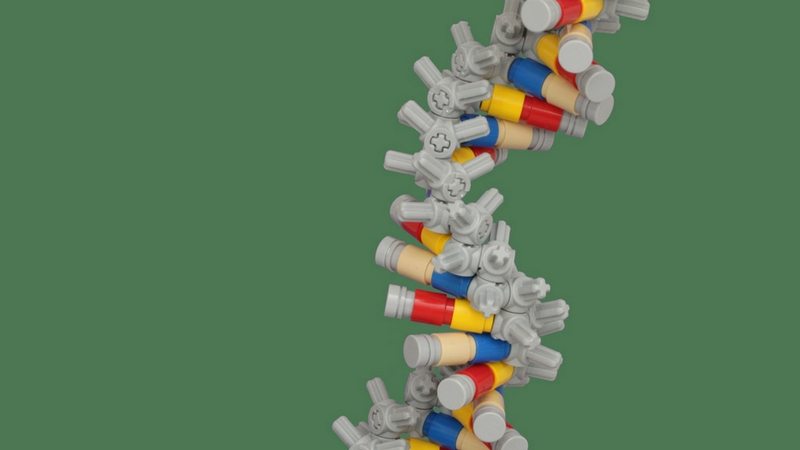Genetic Code
Episode #4 of the course The molecular building blocks of life by Dr. Bill Thomas
In previous lessons, we learned what nucleotides are and how they are incorporated into the much larger molecule, DNA, to make genes. The arrangement of nucleotides into genes that convey meaningful information to the cell is called the genetic code.
A Deceptively Simple Alphabet
Because of the relatively simple chemical makeup of DNA, scientists initially doubted that it could be the repository of genetic information. After all, how could only four nucleotides (A, G, C, and T) encode millions of different proteins? It seemed more likely that proteins, which use 20 amino acids, each with very different properties, carried genetic information. However, a number of elegant experiments demonstrated that genes were contained in DNA, not protein.
Over time, scientists discovered that the genetic code is read three nucleotides at a time; a series of three consecutive nucleotides is called a codon. If we think of nucleotides as the “alphabet” of the genetic code, then codons are all the three-letter “words” that can be made from that alphabet. Of course, these aren’t words in the literal sense, but while “TTA” and “CGG” may not mean anything to us, these codons convey vital information by telling the cell exactly which amino acid to use in the construction of a protein. Because there are 64 possible ways to combine A, G, C, and T into three-letter codons, this limited four-letter alphabet can easily code for all 20 amino acids used to make proteins.
A Redundant Code
Obviously, because the 64 codons of the genetic code are assigned to only 20 amino acids, there is a great deal of redundancy. Although some amino acids, such as tryptophan, have only one codon, most have more than one. Typically, when an amino acid has more than one codon, the third base in the codon can be changed without altering the amino acid. For this reason, the third base in a codon is often referred to as the “wobble base,” because it can frequently be changed without affecting the genetic code. This flexibility provides an important benefit, as we shall see.
Importance of Redundancy
The redundancy in the genetic code has the effect of making genes less susceptible to mutation, which occurs when nucleotides are changed due to DNA damage or errors during cell division. When a mutation changes a codon so it codes for the wrong amino acid, the proteins made from that gene may lose their function. However, the redundancy of the genetic code reduces the chance that a mutation in the DNA will change the amino acid it codes for. For instance, the codons GGG, GGC, GGA, and GGT all code for glycine, so a mutation that changes GGG to GGA has no effect on the protein made from that gene. Note, however, that this redundancy only applies to the third letter in the codon, the “wobble base.” Changing the first or second nucleotide in the codon will result in a different amino acid.
Of course, many mutations do result in changes to genes. For instance, changing the codon GAG to GTG would change the coded amino acid from glutamic acid to valine. This mutation in a specific part of the hemoglobin gene is responsible for the genetic disease called sickle cell anemia. Other genetic diseases caused by changing a single nucleotide in a codon (called a point mutation) include cystic fibrosis, Tay-Sachs disease, and color blindness.
The Universal Code
Interestingly, the genetic code is the same in all organisms, from the simplest bacteria to the most complex plants and animals. This uniformity in the genetic code indicates a common origin for all life on Earth.
Going forward, we’ll look at how the 20 amino acids described by this code are used to construct the myriad different proteins found in living things.
Recommended book
DNA: The Secret of Life by James Watson
Share with friends

